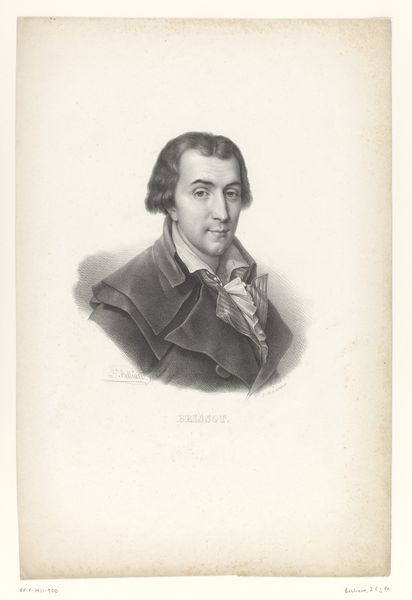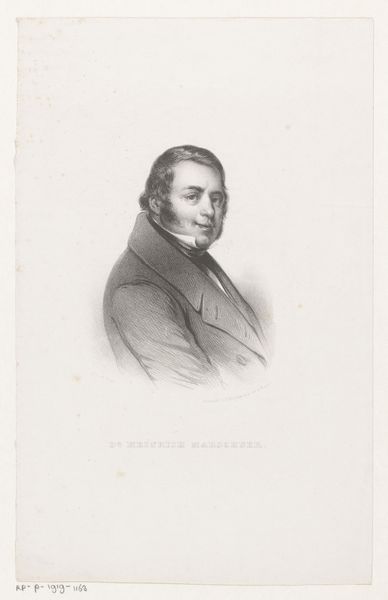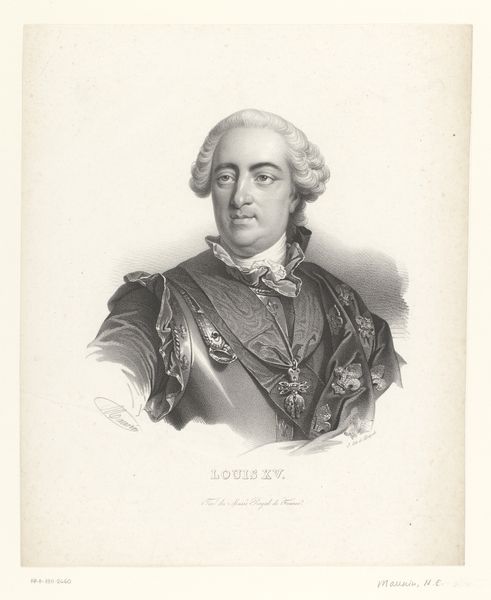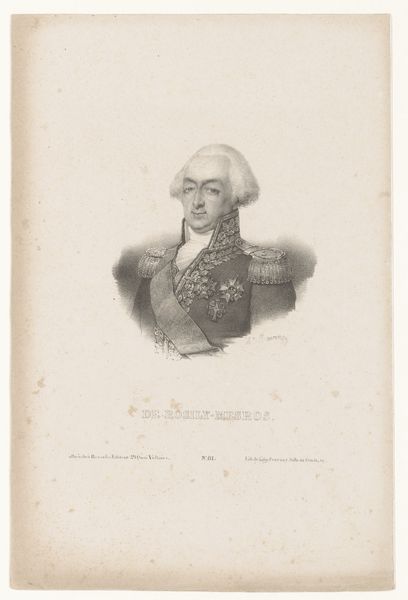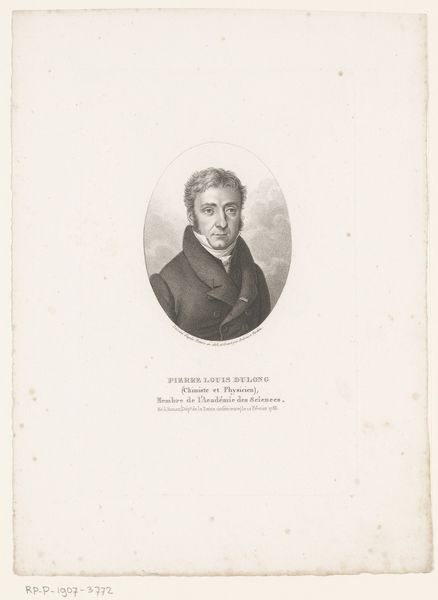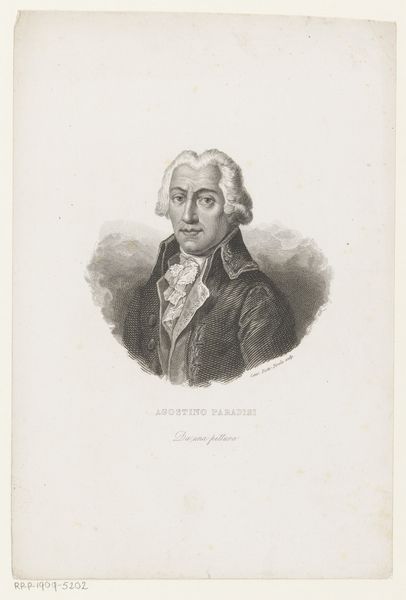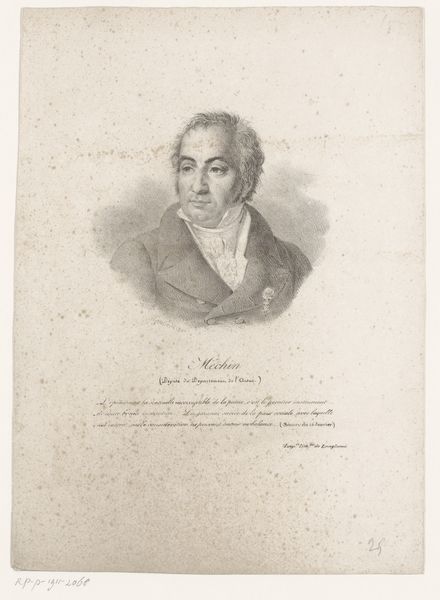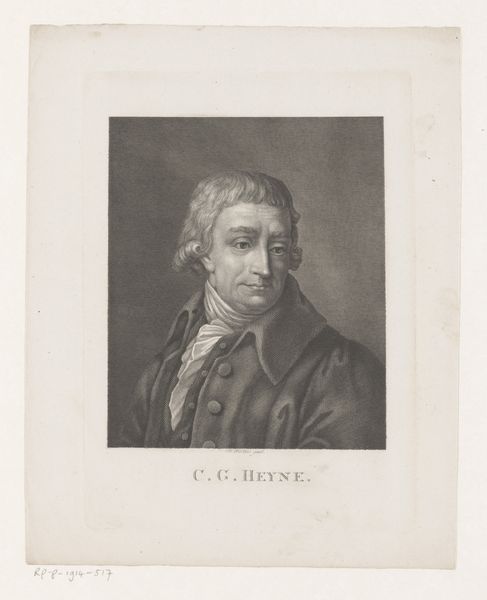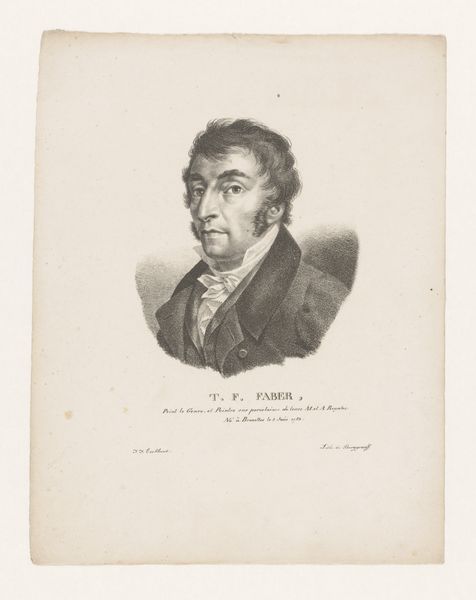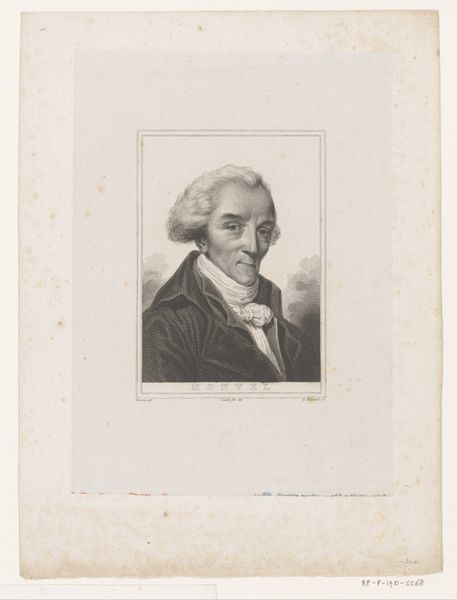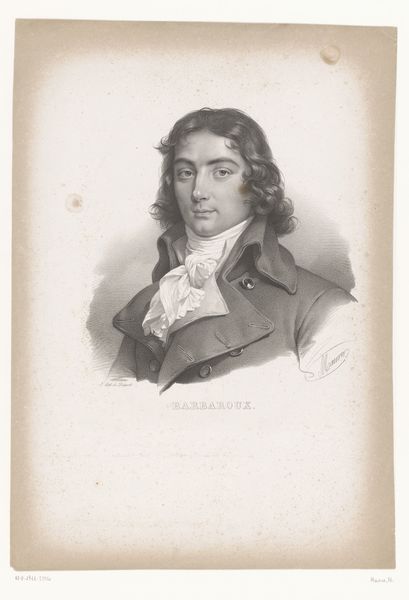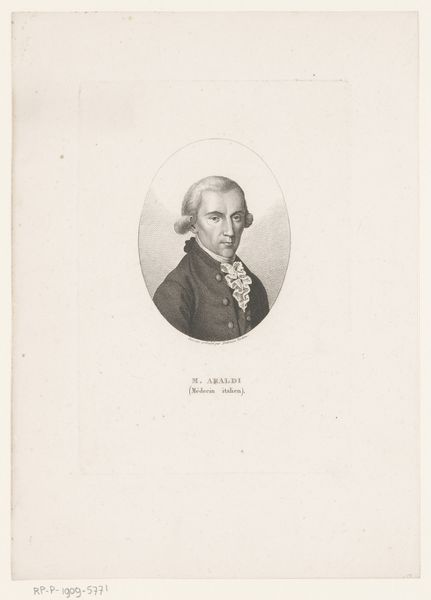
print, engraving
#
portrait
# print
#
romanticism
#
engraving
Dimensions: height 488 mm, width 330 mm
Copyright: Rijks Museum: Open Domain
Editor: Here we have Henri Grevedon's "Portrait of Fabre d'Églantine," an engraving dating back to 1825. It's predominantly gray and white. I’m immediately drawn to the detail in his face and hair, contrasted with the softness of the overall image. What stands out to you formally in this piece? Curator: The brilliance lies in Grevedon's masterful control of line and tone to create depth. Notice how the engraver varies the density and direction of the lines to render form, creating subtle gradations of light and shadow. How does the composition – specifically, the placement of the figure within the frame – contribute to the work's overall impact? Editor: I notice that Fabre d'Églantine isn't quite centered. He seems to slightly favor the left, which gives it an informal, perhaps even Romantic feel? It seems as though his eyes draw you into his soul? Curator: Precisely! The asymmetrical composition, combined with the delicate lines used to capture his facial expression, infuses the portrait with a sense of movement and dynamism. Do you think this informs your perception of the image in any way? Editor: Yes, the movement, I see the subject as more complex. It gives depth to an engraving when I'd normally perceive them as somewhat straightforward, a kind of scientific drawing rather than expressive art. Curator: That's an interesting point. But perhaps Grevedon is implying that beauty and knowledge have equal weight. Through subtle manipulation of technique, the artwork reveals layers of interpretation that are far from straightforward. Editor: It's incredible how technique alone can completely transform a medium's assumed purpose! Curator: Absolutely. Studying the nuances of artistic execution enriches our appreciation. The lines speak volumes, if one attends.
Comments
No comments
Be the first to comment and join the conversation on the ultimate creative platform.
